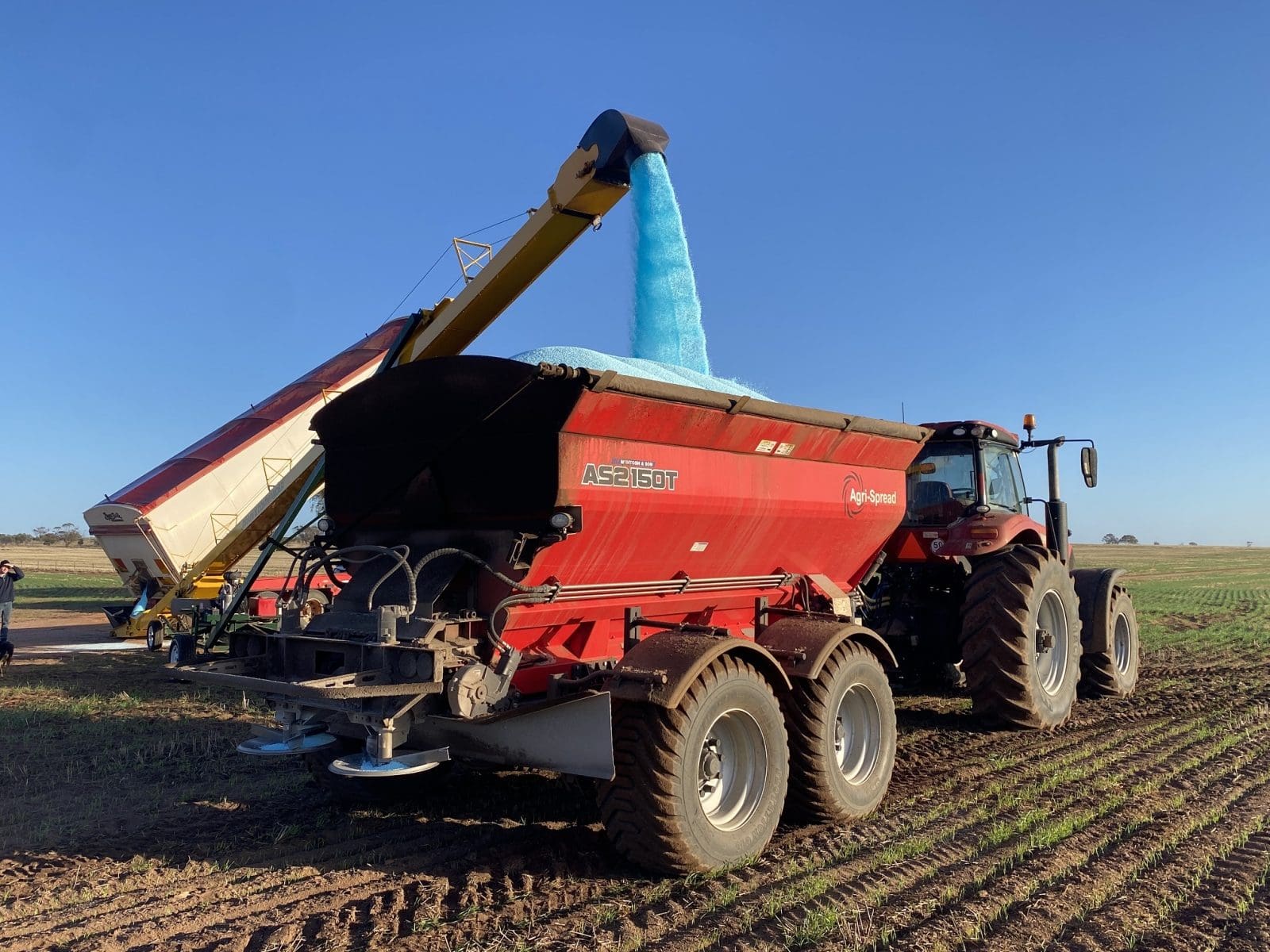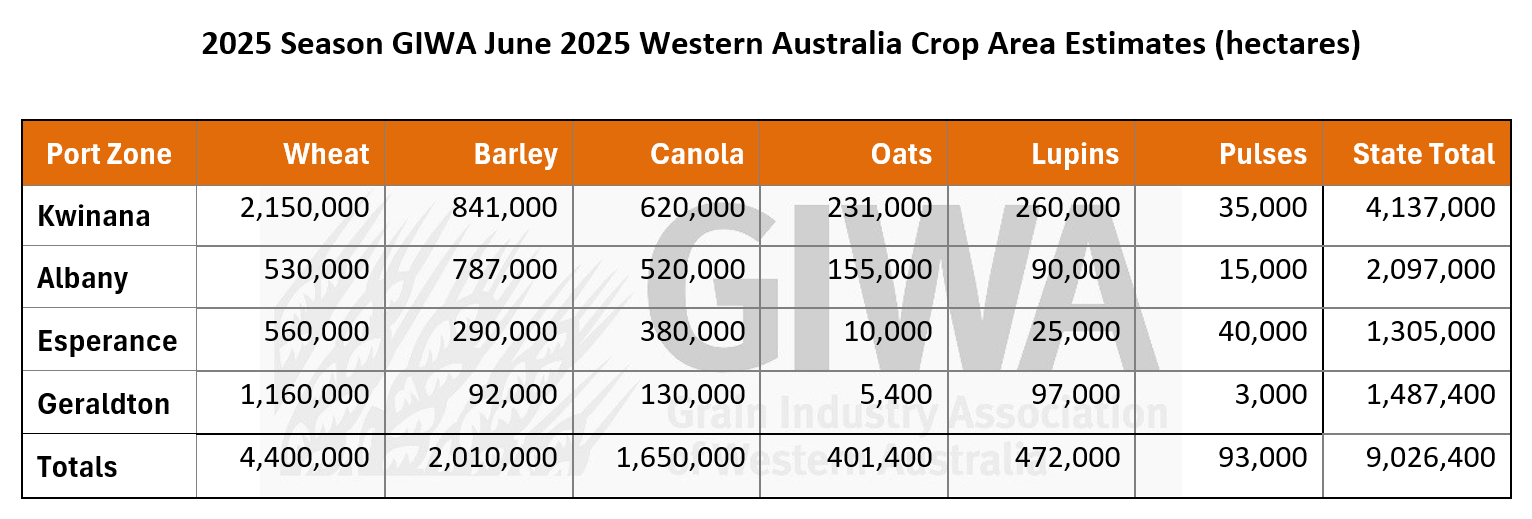
Many crops in WA, including this one at Kellerberrin, have germinated and are ready for top-dressing after recent rain. Photo: CSBP Fertilisers
WESTERN Australia’s area planted to winter crop is estimated at 9,026,400ha, according to the Grain Industry of WA June crop report released today.
This is just below the 9,063,000ha forecast by ABARES in its quarterly Australian Crop Report, but is up 4 percent from the 8,673,000ha estimated by GIWA in its May report.
GIWA report author Michael Lamond said a little under half of WA’s winter crop had emerged prior to general rain in the past two weeks.
“The recent rain was mostly in the northern regions where there had been none at all since 2024,” Mr Lamond said in the report.
“This rain has germinated the dry-sown crops in the north and given a light top-up to those that were already up and away in the south.”
Mr Lamond said most crops have geminated evenly except for some earlier sown crops in the drier fringes and dry pockets in the south.
“The still days and light steady rain has meant there have been no problems with furrow fill, which can occur when rainfall is heavy and the wind is stronger and results in reduced and staggered germination.”
Mr Lamond said getting an even “strike” or emergence is critical in getting crops off to a good start in WA’s characteristically short growing seasons.
“Timing of emergence this year is later than most would prefer, particularly in the north, but the warm days are pushing crops along very quickly, as they did last year, and they are making up ground in growth stages.
“About the only thing missing is water; there are virtually no subsoil moisture reserves in most regions of the state.”
Mr Lamond said this was a concern, and while potential exists for a crop of more than 20- million tonnes, there is “still a long way to go until harvest”.
GIWA estimates WA harvested 22.42Mt of grain from around 9Mha in the 2024-25 crop year.
“The cold fronts that we have been having are going to need to push the high-pressure systems out of the way fairly soon or we will slide into a low-decile rainfall year that will be difficult to recover from in the spring.

GIWA sees the 2025-26 area of barley up on previous years due in part to price, early rain in the southern regions where most of WA’s barley is grown, and the potential yield differential over wheat from the early sowing opportunities.
“The wheat area is also higher than in recent years due to the later rains in the northern cropping zones seeing wheat being substituted at the expense of canola and lupins.”
Mr Lamond said canola area was up in the southern regions and down in the northern and eastern regions, resulting in a roughly similar area to 2024, a five-year low in planted area.
“The story for lupins is similar, with less sown this year in the north and slightly more in the south.
“Oat area is up again with most of the increase in the lower rainfall regions driven by the early sowing opportunities, with the split being more to grain in the Kwinana East zone on the lighter acidic Wodgil soils, and to hay in the corridor from Corrigin to Hyden.
“There also looks to be a slight increase in oats for grain in the major oat grain growing region around Narrogin.”
Source: GIWA
Further detail on crop conditions in individual WA port zones can be found as part of the full report on the GIWA website.

HAVE YOUR SAY